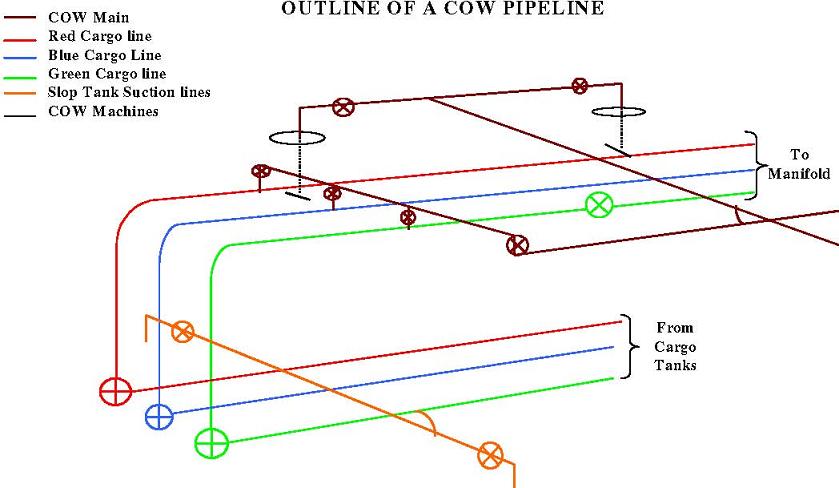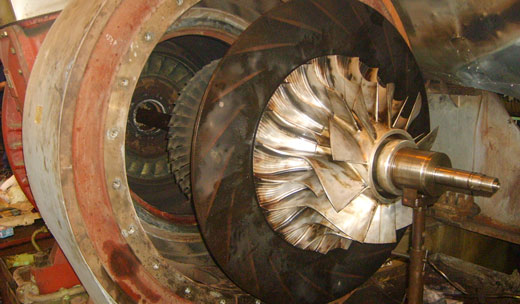
Crude oil is a common type of cargo which is carried by ships and it obviously leads to lot of deposits in the cargo tanks. The removal of excessive sticky crude oil with the purpose of tank cleaning after unloading is known as crude oil washing or COW for short. Crude oil changes it viscosity at different temperatures, when cold it is thicker and will stick more where as when warmer it is thinner and less viscous and hence sticks less.
Crude Oil Washing: Tank Cleaning Procedures
This crude oil cargo remains stick to the walls of the cargo spaces and can accumulate to form thick deposits on the walls and sides. Apart from the leading to unclean tanks, it also leads to loss of cargo and could be a significant percentage of the overall volume of the cargo.
Hence it order to recollect this sticky crude and for tank cleaning purposes, crude is preheated and pumped back to the vessels tanks under pressure. This warm oil passes through a jet which skims the sticky cold crude off the walls with the warm crude.
Due to the large amounts of crude that oil tankers carry, it would be a huge loss for the charterer if the crude stuck on the tank walls was to be left. If left and the crude if found to be removable that the charterer make charge the vessel owner between 0.3 to 0.5 % of the cargo carried. This could amount to huge figures since average net registered tonnage of oil tankers range between 10,000 to 550,000 tones. If you consider an average size tanker the amount could be mind blowing. Below is an illustration of the amounts we are discussing:
Average NRT × 0.4 ÷ 100 = sticky crude oil.
100,000 × 0.4 ÷ 100 = 400 tones
With this calculation, the realization of the huge quantity is very apparent and the necessity of ship owners to make sure that most of the crude oil stuck with the walls is removed.
There are different ways of tank cleaning in which crude oil washing can be done. Below are some methods used in COWing of ships in the past:-
Seawater Washing

Before the OILPOL convention of 1954 oil tankers had different tanks for cargo and ballast accounting for ⅔ and ⅓ respectively. High pressure hot water was used to clean tanks and the mixer of water and residue also known as slops and the oil contaminated water discharged in to the sea. The OILPOL convention attempted to reduce the harm by prohibiting the discharge within 50 miles (80km) of land and 100 Miles (160km) for particular sensitive areas.
Load on Top

During the 1960’s the load on top approach began being used. The mixture of cleaning water and residues were pumped in to a slop tank and allowed to settle and separate during the journey.
The water was then discharged leaving the floating layer of crude oil in the slop tank. This was pumped in to the main cargo tank and the new cargo loaded, thus saving the oceans from the earlier discharges of water and oil mixed slop.
Crude oil washing
Load on top still didn’t stop all the oil from entering the sea as some quantity still leaked in the sea. In the 1970s equipment with capability of using crude oil to wash itself began to replace water based washing. Today we still use the same technique of crude oil washing which reduces pollution and maximizes the amount of cargo discharged. It works by discharging the bulk of crude oil and when a smaller quantity remains then it is connected to a heater which heats the crude oil and pumps it back to the tanker were it passed through jets that skim the sticky crude of the tank walls.
Equipment for cleaning crude oil become mandatory for all new tankers of 20,000 tones and more after the 1973 and 1978 MARPOL conventions and protocol. Revised equipment specifications were introduced in 1999
Crude Oil Washing In Ships,






